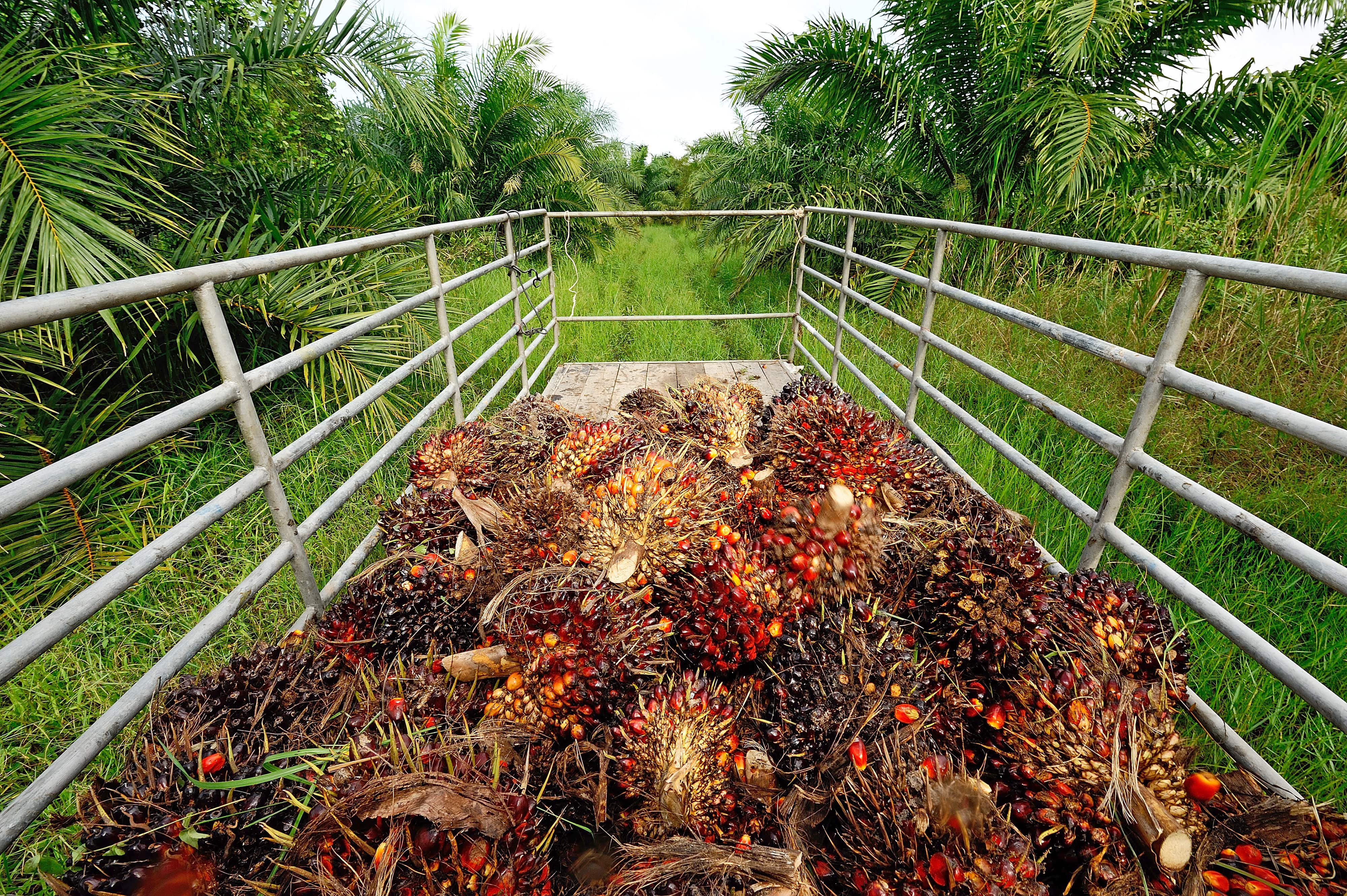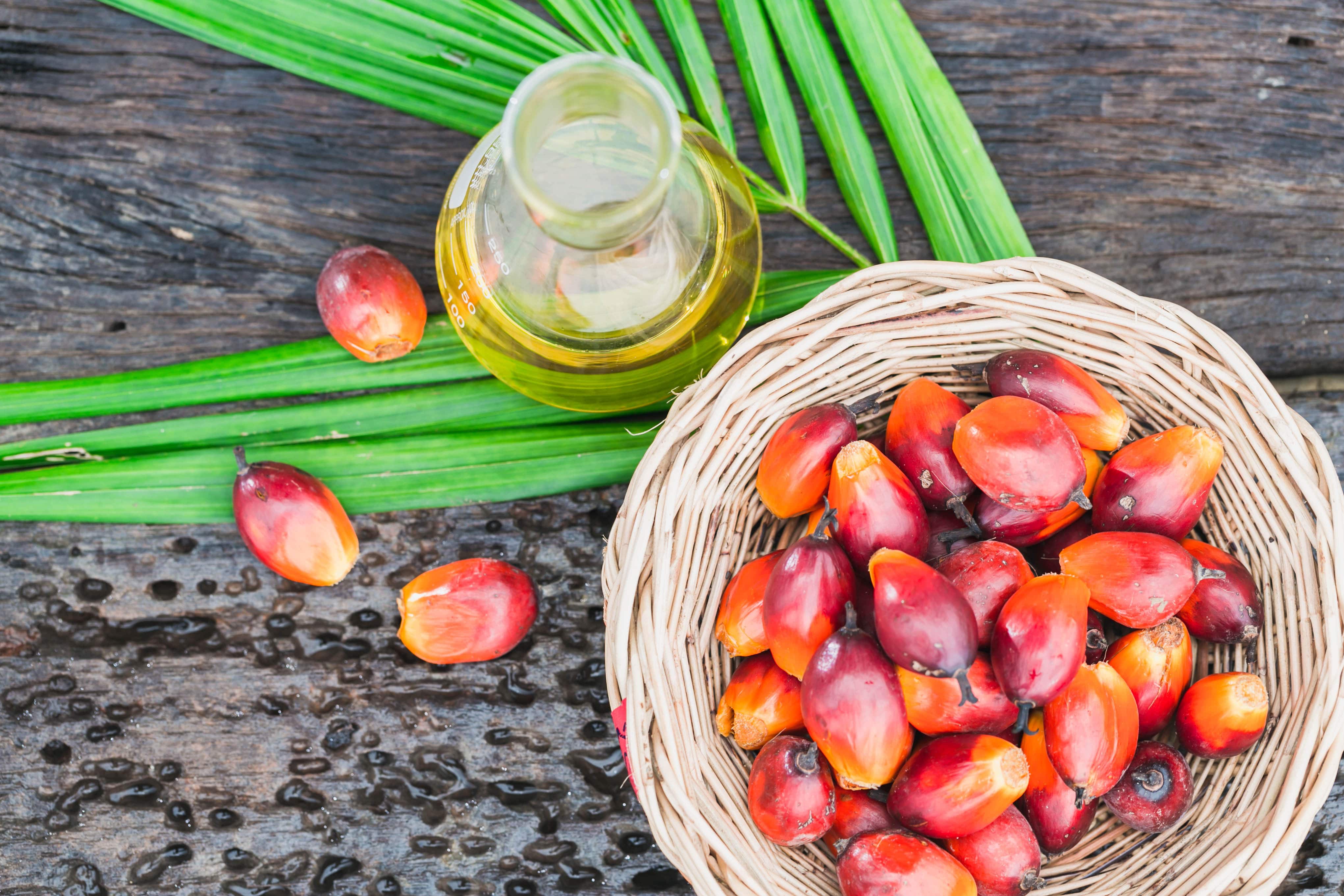What is Hindering the Growth of the Refined Palm Oil Industry in Indonesia?
While refined palm oil in Malaysia, the second-largest worldwide producer, is becoming increasingly known for its high quality, the biggest producer in the world, Indonesia, is facing hardships in further developing its domestic industry. Indonesia is still currently in the process of systemizing its refined palm oil industry, which is surprising due to the size of its large crude palm oil market.
Crude palm oil (CPO) is produced by crushing and squeezing oil out from the palm fruits and is also referred to as “red palm oil” for its color. Refined palm oil is the more widely-known yellow type processed from CPO, which is mainly used for cooking and vegetable shortenings, and can be converted into biodiesel.
Refined palm oil is sold at a higher price than CPO, at an average price of USD 1.06 per kg while CPO averages at USD 0.96 per kg. Palm oil is the most consumed edible oil, and as the refined form is sold at a higher price point, it is a great incentive for the world’s largest palm oil producer to expand on its domestic refineries instead of selling it in CPO form and having it processed in other countries. Indonesia has traditionally been exporting raw palm oil to be processed into higher-value oil in Mumbai, Kuala Lumpur, and Rotterdam.

Indonesia Faces Difficulties in Systemizing the Refined Palm Oil Industry
Indonesia is the biggest worldwide producer of CPO, accounting for nearly 55% of worldwide palm oil production and exports, more than twice the volume of second-largest producer Malaysia. However, despite its large CPO production, Indonesia has been facing difficulties in further developing its refined palm oil industry.
While the refining capacity itself is high at 45 million metric tons per year, it is less systemized compared to Indonesia’s CPO production. According to the World Bank, 50% of palm oil produced in Indonesia is exported in unprocessed CPO form while the other half is processed, of which only half is exported to other countries.
A major factor for the low production of refined palm oil is Indonesia’s lower productivity in refining, as the country’s palm oil sector depends on fragmented small-scale factories. Approximately 42% of palm oil plantation holders are small-scale producers. While small-scale producers foster economic benefits for local communities, they also tend to have lower-than-average levels of productivity. These smallholders are also managed by big umbrella corporations that dominate more than 60% of the refining capacity in Indonesia.

Five large enterprises, Wilmar, Musim Mas, Golden Agri-Resources, Apical, and Best Group, account for 66% of the country’s refining capacity and dominate the popular cooking oil brands. This makes it hard for newcomers to enter into the market as palm oil refineries require large capital investments, strategized location, and infrastructure placements, as well as access to domestic and international markets. This makes it hard for reforms in the current situation.
Another factor influencing refined palm oil production is that Indonesia’s rise to prominence in the commercial agricultural industry is a fairly recent development compared to Malaysia. Due to the sheer size of its production volume, it has been more efficient to focus on CPO productions rather than on its refined form at the onset of production.
Production of Indonesian palm oil is also concentrated on two islands, Borneo and Sumatra, which has left detrimental impacts on their rainforests. Furthermore, Indonesia is also struggling to deal with human rights violations including worker exploitations, dangerous working conditions, and child labor. All of this is a hindrance for foreign investors to consider increasing their investments in the industry.

Malaysia’s Development of Palm Oil Refineries
Malaysia, on the other hand, has a very well-developed palm oil sector. The country has been focusing not only on increasing its production but also on improving productivity and maintaining high quality. While Malaysia was also concentrating mainly on CPO production during the early 1980s, it had been seeking to produce higher-value refined palm oil.
Back in 2007, Malaysia set up a joint-venture with the MAPAK refinery, the largest edible oil refinery in the private sector, to increase the number of state-of-the-art refineries that have contributed to the increase in more than 50% of Malaysian CPO imports that were processed into refined form. In January, the Malaysian government even raised the export tax on CPO to 6%, a move speculated to encourage palm oil to be refined within Malaysia and exported in that form.
In October 2019, the Indian government halted its imports of refined palm oil from Malaysia, which is believed to have been a response to Malaysian Prime Minister Mahathir Mohamad’s remarks on the Indian government’s policy on Muslims in Kashmir. India is Malaysia’s largest export destination, and as a result, Malaysian palm oil exports to India dropped to just 46.9K tons in January 2020, which is an 85% drop from a year earlier, the lowest since 2011.

Malaysia now has to diversify its export destinations to sell its large amount of palm oil. The Malaysian government had already been exploring new markets in the Middle East, Africa, and Central Asia in addition to expanding on traditional export destinations such as India, China, the EU, and Pakistan. Amidst the decreased exports to India, Malaysia has signed a deal with Pakistan to export more palm oil starting later 2020.
Furthermore, the country is continuing to expand its export destinations by signing investment deals from new markets such as Japan. A deal was signed by the Malaysian state of Sabah, where there are the most plantations, between the Lahad Datu Palm Oil Industry Cluster (POIC) and biomass industry companies in Japan regarding an MYR 100 million (USD 23.9 million) agreement. The deal also involves a 20-year agreement to supply oil and oil-based products to Japan.
This year Malaysia is also aiming to export more palm oil to the Middle East and has signed a preliminary pact with Dubai-based Hakan Agro DMCC, and is also partnering with the Bohai Commodity Exchange in China to supply 1.5 million tons of palm oil to the country by 2020.

Outlook on the Indonesian Palm Oil Refining Industry
Indonesia is aware of the issues it faces and has been aiming to further develop its industry. The Malaysian refined palm oil industry serves as an example of how the country could model its plantations and industry in terms of upgrading its refineries as well as expanding its export markets.
Back in 2012, Indonesia had collected USD 2.5 billion of investment funds into the domestic refining industry. In response to environmental and human rights groups, it also introduced the Sustainable Palm Oil System (ISPO) in 2011 which is a mandatory certification system to provide stable working conditions for workers and ensure sustainability in the environment.
Furthermore, prospects are looking better for the country as India has recently issued import licenses to Indonesian suppliers for 1.1 million metric tons of refined palm olein, the liquid obtained when palm oil is separated from palm fruit. Refined palm olein, or RBDPO, is mainly used to produce cooking oil. India had previously categorized refined palm oil and palm olein as restricted items in January as a retaliatory gesture against top supplier Malaysia.

The EU ban in January on the use of palm oil production in biofuel, however, leaves questions about how the refined palm oil industry will be able to expand further. The decision was made due to increasing environmental concerns about palm oil usage. The drop in recent demand from China due to the coronavirus outbreak has also created doubts about sales for early 2020.
So far, both Indonesia and Malaysia have taken the ban to the WTO and Indonesian chief economic minister Airlangga Hartarto has announced on February 26th that the government plans to increase palm oil export levies to fund its palm oil biodiesel industry. While the increase in levies is still being worked out, this is expected to finance biodiesel subsidies and provide financial aid for smallholders of the palm oil industry.
Sources
- Reuters. "Insight: Top palm oil producer Indonesia wants to be more refined."
- Taylor Francis Online. "Bulletin of Indonesian Economic Studies."
- Astroawani. "Sabah has attracted RM100 million in investment from Japan."
- Farmimex. "Indonesia Palm Oil."
- World Bank. "Indonesia's Palm Oil Subsector."
- The Jakarta Post. "India allots import licenses for 1.1 million tons of refined palmolein from Indonesia."
- Quartz. "The global demand for palm oil is driving the fires in Indonesia."
- Research Gate. "Developmentof Palm Oil and Related Products in Malaysia and Indonesia."
- World Review of Business Research. "Assessing the Competitiveness of Malaysia and Indonesia Palm Oil Related Industry."
- Info Sawit. "The Challenge of Palm Oil from the European Union."
- Malaysia Kini. Translated from Indonesian. "Why palm biodiesel is more important than you thought?"
- Industri Kontan. Translated from Indonesian."GIMNI predicts cooking oil production this year will reach 29 million tons."
- Katadata. Translated from Indonesian. "Against European Palm Discrimination, Observers Propose B30 to Retaliation."
- Chain Reaction Research. "Unsustainable Palm Oil Faces Increasing Market Access Risks: NDPE Sourcing Policies Cover 74 Percent of Southeast Asia’s Refining Capacity."
- Nikkei Asian Review. "Pulling Indonesian oil refining out of decline."
- Reuters. "Malaysia sets February export tax for crude palm oil at 6%."
- Reuters. "Indonesian government plans to raise palm oil export levy: minister."
- The Economics Times. "Definition of 'Crude Palm Oil'."
- The Economics Times. "Crude Palm Oil Rate."
- Reuters. "India's curbs on Malaysian palm imports stir up edible oil trade."
- Feel Good. "The Differences in Palm Olein & Palm Oil."
- The Economic Times. "Edible oil industry body demands cap on import of refined palm oil."
- The Edge Markets. "Indonesia' palm oil exports hit record in 2019."
- Hellenic Shipping News. "Palm oil supply crunch compels India and China to increase soybean and sunflower oils imports."
- The Economic Times. "Palm oil heads for worst week in 11 years on demand destruction."





